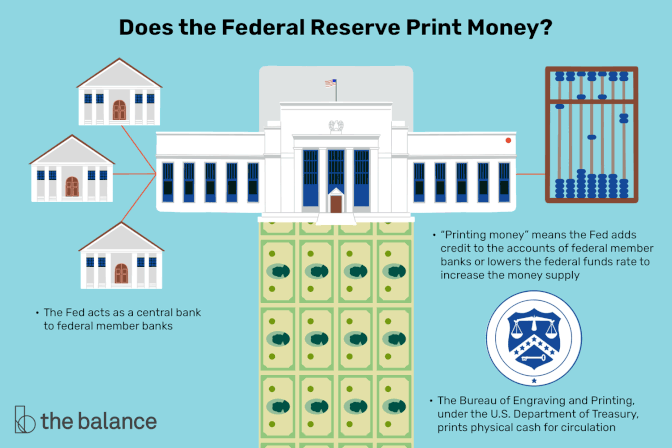Is the Federal Reserve Printing Money?
Is the Federal Reserve Printing Money?
By Kimberly Amadeo Updated March 14, 2022 Reviewed By Erika Rasure
does the federal reserve print money? The Fed acts as a central bank to federal member banks; “Printing money” means the Fed adds credit to the accounts of federal member banks or lowers the federal funds rate to increase the money supply; The Bureau of Engraving and Printing, under the U.S. Department of Treasury, prints physical cash for circulation
The Federal Reserve is America's central bank. Its job is to manage the U.S. money supply, and for this reason, many people say the Fed "prints money." But the Fed doesn't have a printing press that cranks out dollars. Only the U.S. Department of Treasury can do that. The Fed has a good many other monetary powers, however.
Key Takeaways
People say the Fed is "printing money" because it adds credit to accounts of federal member banks or lowers the federal funds rate.
The Fed takes both of these actions to increase the money supply.
The Bureau of Engraving and Printing, under the U.S. Department of Treasury, does the actual printing of cash for circulation.
How the Fed "Prints" Money
Most of the money in use is not cash. It's credit that's added to banks' deposits. It’s similar to the kind of credit you receive when your employer deposits your paycheck directly into your bank account.
When people say the Federal Reserve "prints money," they mean it's adding credit to its member banks' deposits.
The Federal Open Market Committee (FOMC) is the Fed’s operational arm, guiding monetary policy. It engages in expansive monetary policy when the Fed expands credit. It increases the money supply available to borrow, spend, or invest. Expanding credit helps to end recessions.1
The Fed mainly uses two of its many tools to implement monetary policy.
The Federal Funds Rate
The Fed lowers the target for the federal funds rate when it wants to "print money." Fed funds are what banks are required to hold in reserve each night.2 A bank will borrow fed funds from another bank to meet the requirement if necessary. The interest rate it pays is referred to as the "fed funds rate."
The FOMC allows banks to pay less for borrowed fed funds when it lowers the target for the fed funds rate. Banks have more money to lend because they're paying less in interest.
The Fed typically requires that banks hold 10% of their deposits in reserve. This reserve requirement was lowered to zero in March 2020 to fight the recession caused by the COVID-19 pandemic.2
Banks would like to lend every dollar they don't have to hold in reserve, so they comply as soon as the FOMC lowers the fed funds rate target. They then reduce all other interest rates.
To continue reading, please go to the original article here:
https://www.thebalance.com/is-the-federal-reserve-printing-money-3305842
